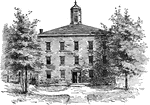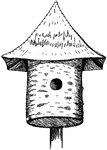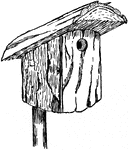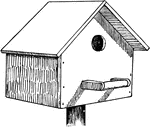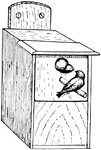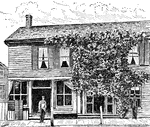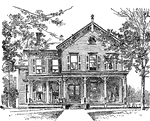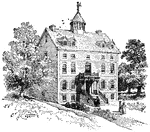
York (Toronto) in 1813, From the Block House East of the Don
York is a community in Toronto, Ontario, Canada. Formerly a separate city, it was one of six municipalities…

Rall's Headquarters
Johann Gottlieb Rall (ca. 1726 - December 26, 1776 ) was a German colonel in command of Hessian troops…
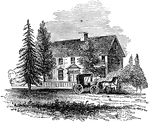
Governor Jonathan Trumbull House
John Trumbull Birthplace, also known as Governor Jonathan Trumbull House, is a house on Lebanon Green,…

Deer Mouse
The genus Peromyscus contains species commonly referred to as deer mice. This is a genus of New World…

Battleground at Concord
"Battle ground at Concord. This view, looking southeast, is from the road leading to the village, by…
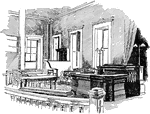
Chamber of Illinois House of Representatives
The chamber of Illinois House of Representatives where Lincoln made his first speech in opposition to…
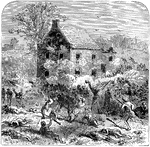
Lord Stirling's Last Stand Around the Cortelyou House
At the Battle of Long Island, in August of 1776, Stirling led the 1st Maryland Regiment in repeated…

Van Cortlandt Manor House
Originally, it was an 86,000-acre (350 km²) tract granted as a Patent to Stephanus Van Cortlandt in…
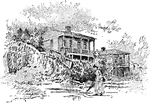
General Pemberton's Headquarters at Vicksburg
Pemberton's Headquarters is a two-story brick house that served as the headquarters for Confederate…

Multi Level Bird House
An illustration of a multi level bird house commonly used for Purple Martins.
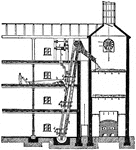
Malt House
An illustration of a floor malt house with a power shovel and bucket elevator for the green malt.
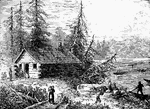
Early Settlers
During this early period Virginia's population grew with the introduction of settlers and servants into…

Tobacco Cultivation in Colonial Virginia
Tobacco being harvested in the Virginia Colony. By 1612, John Rolfe's new strains of tobacco had been…

Berkeley, Virginia (Near Harrison's Landing)
On December 4, 1619, a group of 38 English settlers arrived at Berkeley Hundred, about eight thousand…
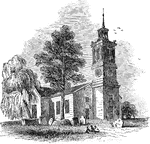
St. John's Church
St. John's Episcopal Church is the oldest church in Richmond, built in 1741 and giving its name to the…

House Cricket Larva
An illustration of a house cricket larva. Acheta domesticus (house cricket) is a cricket native to Europe.…

House Cricket Pupa
An illustration of a house cricket pupa. Acheta domesticus (house cricket) is a cricket native to Europe.…
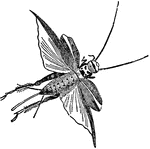
House Cricket
Acheta domesticus (house cricket) is a cricket native to Europe. Both sexes of this grey or brown cricket…

Remains of the Capitol After the Fire of 1814
The Burning of Washington took place in 1814, during the Anglo-American War of 1812. British forces…

Remains of the White House After the Fire of 1814
The Burning of Washington took place in 1814, during the Anglo-American War of 1812. British forces…
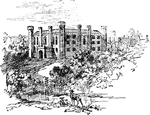
Washington Old Hall
Willian de Wessyngton was a forebear of George Washington, the first President of the United States.…

Washington Family Residence
Ferry Farm, also known as George Washington Boyhood Home Site or Ferry Farm Site, is the name of the…

Mount Vernon in Washington's Day
Mount Vernon, located near Alexandria, Virginia, was the plantation home of the first President of the…
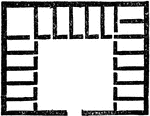
Private Dwelling Floor Plan
An illustration of a typical floor plan in an Egyptian private dwelling.
Hathor's Column
An illustration of a column with a craving of Hathor. In Egyptian mythology, Hathor (Pronounced Hah-Thor)…
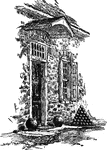
Entrance to Washington's Headquarters, Newburgh
Hasbrouck House served as Washington's headquarters during the Revolutionary War from April 1782 until…
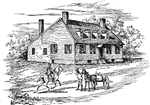
Washington's House in Fredericksburg
Ferry Farm, also known as George Washington Boyhood Home Site or Ferry Farm Site, is the name of the…
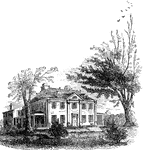
Washington's Headquarters at Cambridge, 1775
Washington used the home as his headquarters and home while he planned the Siege of Boston between July…
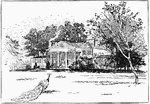
Montpelier: The Home of James Madison
Montpelier was the estate of James Madison, fourth President of the United States.
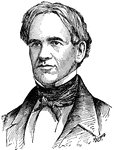
Horace Mann
Horace Mann (May 4, 1796 – August 2, 1859) was an American education reformer, and a member of…

Washington's Headquarters at New York
The Morris-Jumel Mansion (also known as the Roger and Mary Philipse Morris House), located in historic…
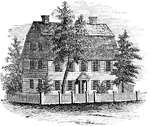
The Webb House
Joseph Webb House is a historic Georgian-style house in Wethersfield, Connecticut that was the site…
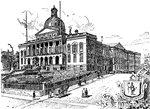
The State House, Boston, Massachusetts
The Massachusetts State House, also called Massachusetts Statehouse or the New State House, is the state…

State House, Annapolis, MD
Construction began in 1772 and was not completed until 1779 due to the ongoing Revolutionary War. From…

James Miller
James Miller (25 April 1776 - 7 July 1851) was a member of the United States House of Representatives…

George Washington's House on Cherry Street, New York (1789)
In 1789, George Washington lived on Cherry Street, in a four-story mansion that belonged to Walter Franklin,…

George Washington's House on Broadway, New York (1790)
In 1788, he built a magnificent home on Broadway, which in 1790 was leased to become the president's…
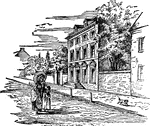
The President's House in Philadelphia (1794)
This house, located on the 500 block of Market Street, served as the executive mansion of the United…
